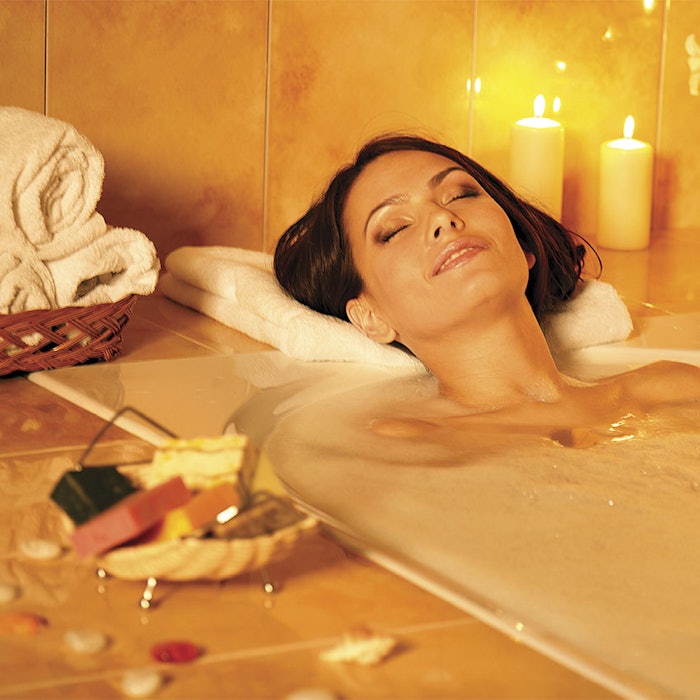
In daily life, we experience different degrees of psychological stress. This stress, as an evolutionary adaptation to the fight-or-flight response, triggers a number of physiological responses. For example, it signals the activation of the hypothalamus-pituitary-adrenal (HPA) axis and the sympathetic nervous system. And elements derived from these systems, e.g., cortisol, catecholamines and neuropeptides, can impact the immune system.
The skin is especially sensitive to psychological stress. Stress has been shown to impact the skin’s innate immunity and recovery time of the SC barrier after its removal. It also alters skin’s adaptive immunity via antigen presentation by epidermal Langerhans cells. Moreover, the industry is well-aware of immune-mediated dermatological conditions triggered by stress, including atopic dermatitis and psoriasis.1
Among other conditions, our skin’s appearance is affected by our health and well-being, and the capability of the stratum corneum (SC), as the uppermost layer of the skin, to act as a water-holding envelope for our body is crucial. Interestingly, while the benefits of daily grooming rituals on our skin, e.g., cleansing, bathing and sauna, are recognized empirically, they also show signs of fortifying the SC barrier. These observations are reviewed in brief here; although more research is required to elucidate the physiological and psychological effects on the human body.
A Fragrant Defense
The pleasure of taking a lukewarm shower or bath, represented by the refreshing sensory effect on both the skin and brain, is known to all of us. Beyond this, the added stimulation from rubbing with a washing mitten adds to the overall efficacy.
In addition, fragrance can affect the sympathetic and parasympathetic nervous systems, along with brain activity. They also act on the neuroendocrine system, neurotransmitters and neuromodulators, influencing psychological behavior and body function. This is because the olfactory system plays a role in central nervous system function beyond that of smell, influencing stress biomarkers, oxidative stress, estradiol, dopamine, skin barrier function, sebum secretion and skin immune system.2
In relation, so-called green odors, or the scent emitted by green leaves, inhibit stress-induced activation of the HPA axis, preventing chronic disruption of the skin barrier. Also, rose essential oil, another sedative odorant, inhibits the effects of chronic stress, which are measurable by changes in skin barrier function and salivary cortisol. Indeed, chronic stress-induced disruption of the skin barrier might be limited or prevented by inhaling rose essential oil.3
Sympathetic Sauna
Sauna use has become a popular wellness practice, particularly in cold-climate countries, and the impact of its regular use on skin physiology was studied in exploratory research using non-invasive measurement techniques.
Stratum corneum hydration, TEWL and surface pH were assessed in healthy volunteers, ranging from 20 to 49 years of age, exposed regularly to saunas. Two 15-min sauna sessions at 80°C revealed stabler epidermal barrier function, an increase in SC hydration, and faster recovery of TEWL and skin pH compared with a control group of volunteers not exposed to saunas. A decrease in casual sebum production on the forehead also was observed with sauna exposure.
Sauna use also affects heart rate, ionic concentration in sweat and epidermal blood perfusion, showing a “training” effect on the body with regular use.4 Heart rate variability (HRV) is the parameter measured in stress-related research and comprises three components: low frequency (LF), indicating sympathetic function; high frequency (HF), indicating parasympathetic function; and the ratio of LF/HF, indicating the balance of the autonomic system. In relation, a separate study showed that six weeks of regular sauna use increased sympathetic activity.5
The tactile part of sauna treatments also contributes to well-being, although our understanding of these mechanisms is in its infancy. When skin is stimulated by itch, e.g., in the bath or sauna, with slight irritation from heat or bathing additives, the pleasantness evoked by scratching the skin activates not only the reward system in the striatum and midbrain, but also key regions of perception in the primary somatosensory cortex and the awareness of subjective feelings in the insular cortex.6
Less (Stress) is More
Finally, recently highlighted anti-aging interventions are being based on hormetins. These elements induce beneficial life-supporting effects through cellular responses to a single or multiple rounds of mild stress, in turn stimulating various defense pathways. Hormetins can be physical, e.g., massage, heat and radiation; chemical, such as micronutrients and phytochemicals; as well as psychological. In my view, sauna steaming and fragrant bathing also could be considered hormetic practices.
Hormetin-based anti-aging interventions are at the forefront of well-being research but the dose, timing, frequency and specificity of stresses have yet to be investigated in detail.7 One study from LVMH Recherche attempted to change the social perception of this concept by improving the scientific understanding of the hormetic nature of stress. I believe research such as this will provide future opportunities for developing new health care products and technologies using novel physical, psychological and nutritional hormetins.8
References
All websites accessed Feb. 8, 2017.
- ncbi.nlm.nih.gov/pubmed/22969795
- ncbi.nlm.nih.gov/pubmed/24117755
- ncbi.nlm.nih.gov/pubmed/22167272
- ncbi.nlm.nih.gov/pubmed/18525205
- ncbi.nlm.nih.gov/pubmed/23859414
- ncbi.nlm.nih.gov/pubmed/24155004
- ncbi.nlm.nih.gov/pmc/articles/PMC4037311/
- http://bit.ly/2lpA1RO











